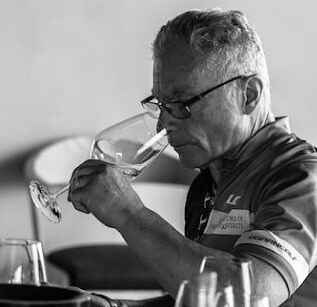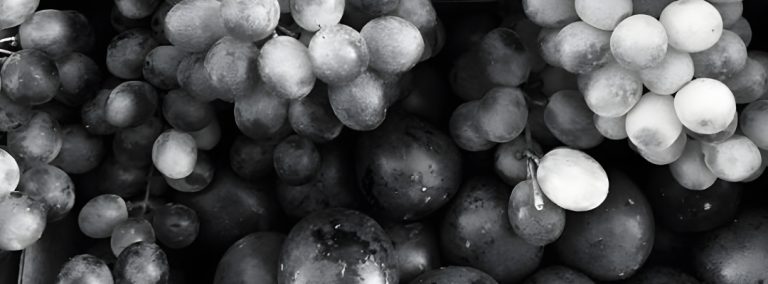While many people think of red wine from Bordeaux as being Cabernet, most of the wines from this region of France are actually a blend of different grape varieties. A Bordeaux blend can include grapes like Merlot, Cabernet Sauvignon, Cabernet Franc, Petit Verdot and Malbec, in addition to varieties like Carmenere.
The exact makeup of the blend differs from one chateau and/or producer to another and you’ll find certain blends are more common in specific sub regions. For example, in Saint-Emilion they generally use Cabernet Franc and Merlot. The blend will also change from year to year. This is to allow winemakers to produce the best wine possible depending on mother nature and how the individual grape varietals have fared given the weather.
If you’re still wondering why Cabernet is so commonly associated with Bordeaux it’s because some of the most famous red wines from the region, think Chateau Margaux, Mouton Rothschild and Lafite Rothschild, are blends in which Cabernet Sauvignon is the primary grape! Bordeaux also happens to be where Cabernet Sauvignon originally comes from in France.
Why blend grape varieties?
In some parts of the world winemakers don’t blend grapes at all, they simply use one varietal to make their wine. So why do they do it in Bordeaux? There are a few reasons why blending is so common in this part of France. One is to do with climate. The weather in Bordeaux isn’t always the best. Blending ensures winemakers can produce the highest quality wines given the grapes they have to work with. In a colder year, the Cabernet Sauvignon may not have ripened as well so you might find more Merlot in the blend. If you have a beautiful fall, the Cabernet grapes may be at their best so they’ll feature more strongly.
Secondly, the diversity of soil across the region allows for more varieties of grapes to be grown. Some prefer the gravelly soils, whereas others can be planted in vineyards with more limestone and clay. Also note, in Bordeaux it’s not uncommon for winemakers to plant different grape varieties in the same vineyard. What they choose to plant is based on the soil type and the blend they’re trying to achieve.
And while there are rules in Bordeaux regarding which varieties can and can’t be used, there’s no designated varietal percentage that any one wine has to follow. This is quite different from some wine regions, both in France and in other countries, where the blend must contain specific percentages of certain varieties. It all depends on the country, the region and the rules of the appellation.
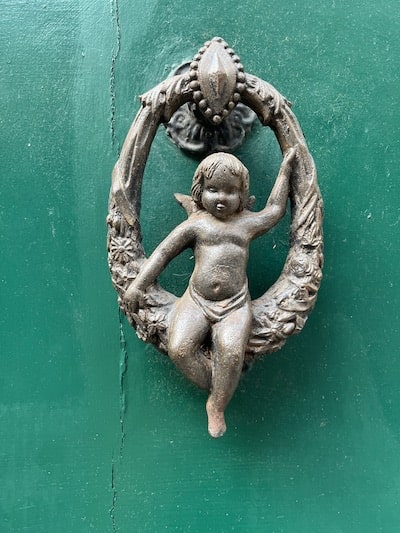

Grapes in a Bordeaux blend
- Merlot. Merlot is the most planted grape in vineyards in this part of France. It’s not surprising then that it’s one of the main varieties in many Bordeaux blends. Merlot has distinct blackberry notes along with cassis, plum, and dark chocolate. The grapes are a deep ruby color and less tannic. This means they’re somewhat softer, fleshier and can give the blend a velvety mouthfeel. They’re also early ripening and as they say in winemaking, these vines like to have “wet feet,” meaning they do best in soil that holds more water.
- Cabernet Sauvignon. This is a French grape that actually comes from the Bordeaux region (though it only makes up about 20% of the red wine vineyards planted in Bordeaux). Some of the best wines in the world are made with Cabernet Sauvignon which gives wine great structure, aromatics and red fruit flavors. Its high tannin content also contributes to an impressive aging potential and consequently you’ll find it’s the primary grape in many a Bordeaux blend! The grapes are a deep ruby red color and you can get notes of blackberry, blackcurrant, cedar, leather, graphite and dark chocolate.
- Cabernet Franc. While Cabernet Franc may not be one of the two big varieties grown in the Medoc, it is still one of the main components of blends that come from wines made in Saint-Emilion where the soil is mostly limestone and clay, as well as wines from Pomerol. It’s a deep purple color and you can get notes of raspberry, sour cherry and even blueberry when Cabernet Franc is in the blend.
- Malbec. Although most people associate Malbec with Argentina, it’s actually a red varietal that comes from France. Malbec used to be a major part of Bordeaux blends but it’s less commonly used these days. It’s a deep inky purple and lends plum and chocolate flavors to the wine. It’s also less tannic and can be softer. Note, Malbec grapes from France are somewhat different from what you’ll find in South America.
- Petit Verdot. A good way to think about Petit Verdot is it’s like the salt and pepper you use to flavor a soup. Petit Verdot is never one of the main varieties in a Bordeaux blend and is typically used sparingly at 5% or less. There’s a reason for that. Petit Verdot can have a strong flavor profile with intense violet notes and sometimes hints of pencil lead. Petit Verdot is also quite tannic and is one of the late-ripening red varieties.
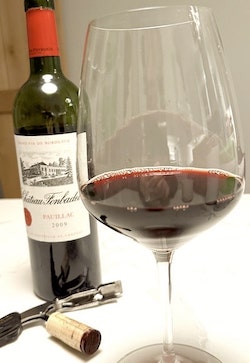
What is wine from Bordeaux like?
Most red wine from Bordeaux is full-bodied, and tannic. It’s the kind of French wine that you want to have with food, especially if it’s a bottle from the Medoc region. A Bordeaux wine is typically big and structured and sometimes needs a few years of aging so it can soften a bit before drinking. It’s not wine you serve with appetizers, but more the best wine to pair with steak or a stew. That’s because the tannins will overpower most foods. These wines need rich flavors and sauces to help balance them out.
That being said, there is also plenty of wine from Bordeaux that’s more accessible. It’s made in less prestigious areas and is commonly referred to as Petits Chateaux (you’ll find Merlot tends to be the main grape in the blend). You can drink Petits Chateaux with food, including hors d’oeuvres, or have them on their own with cheese and crackers.
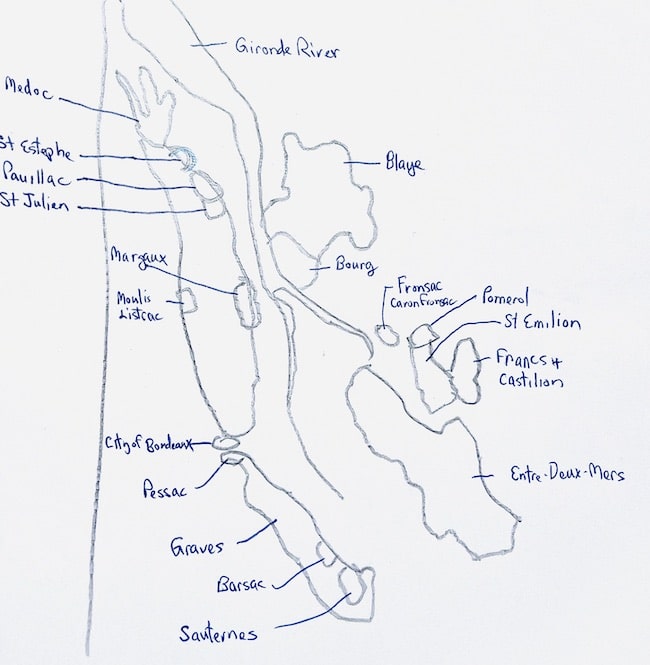
Regions and appellations within Bordeaux
Bordeaux is in the southwestern part of France. If you look at the geography of the Bordeaux region, you can see the Girone river splits it into two areas known as the Left and Right Bank. The Left Bank is situated between the Atlantic Ocean and the river and as a consequence, it doesn’t look that different from Cape Cod! The Left Bank is where you’ll find the wine growing region of Medoc as well as the Haut-Medoc below it, Pessac-Leognan, Graves, and the white grape producing regions of Sauternes and Barsac.
Top Wine Tip: Most Chateaux in Graves produce both a red and a white wine. A white wine from Graves is usually a blend of different varieties including Semillon, Sauvignon Blanc and sometimes Muscadelle. Semillon is known for its beeswax and honey flavors and aromas.

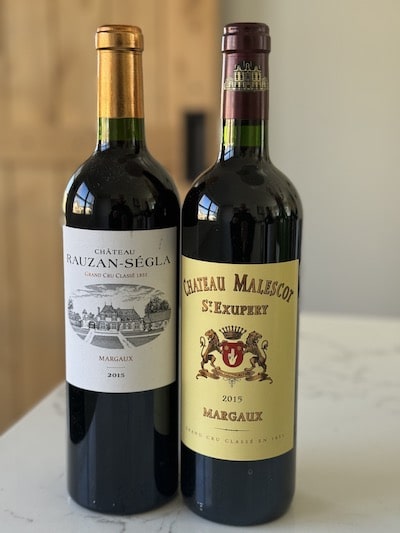
The Haut-Medoc is particularly important to be aware of given this is where the famous areas of Saint-Estephe, Pauillac, Saint-Julien and Margaux are located. You may have heard of Chateau Margaux and Lafite Rothschilde. Their wines come from here. Red wine from this part of Bordeaux tends to be a predominantly Cabernet-based blend.
On the Right Bank, you’ll find Blaye, Bourg, Fronsac, Canon-Fronsac, Castillon Pomerol, Saint-Emilion and Entre-Deux-Mers. The most famous growing regions of the Right Bank are Saint-Emilion and Pomerol. Pomerol is where the celebrated Chateau Petrus comes from. Note this wine is 98-100% Merlot and they only make about 2,500 cases of it in a good year! There’s a lot of Cabernet Franc in blends from Saint-Emilion and Pomerol.
More about Bordeaux
Although Bordeaux is one of the most famous wine growing regions in the world, it’s not necessarily the easiest to get your head around. That’s because it consists of several major growing areas that produce somewhat different wines. There’s also a classification system in place that has given some wines a more prestigious reputation than others.
If you’re going to your local wine store for a $20 bottle of red that says Bordeaux on it, you’re probably buying a Merlot-based blend. It could be from any of the growing areas under the Bordeaux appellation and it may or may not tell you the grapes in the blend.
If the wine just says the name of a growing region, for example Saint-Emilion, Saint-Estephe or Saint-Julien, it’s a blend that comes from red grapes grown in that specific area. To keep their wines to a certain quality level, estates often sell unused grapes or grapes from younger vines to negociants. Note, they can also have a secondary wine label that is a step-down from their main production. You can additionally have individual growers who grow grapes and sell them to negociants who then produce regional wine. Confusing, right?
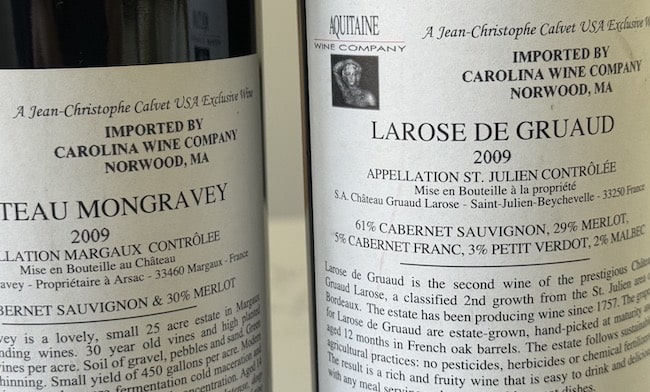
When you see “chateau” on the wine bottle label
Most wine from Bordeaux has the name of a chateau on the label. A chateau is basically an estate. If the wine has this designation, all levels of production, from growing the grapes, to making the blend, aging and bottling the wine must take place on that particular site. The wine will be a blend but all of the grapes will come from a specific vineyard.
First Growths and classification systems
Back in 1855, Napoleon III requested a classification system be established for wine from Bordeaux, specifically for vineyards on the Left Bank. The classifications were known as “growths” and ran from First to Fifth Growth with First Growth being the most prestigious. Only the top 63 chateaux were included in this ranking and since then only one has succeeded in changing its status. Mouton Rothschilde had their Growth changed from Second to First in 1973. Chateau Haut-Brion from Pessac-Leognan just north of Graves was the first and only wine outside of the Medoc to be classified as a First Growth wine. Later on, a designation of Crus Bourgeois du Medoc was created to accommodate any wine producers not included in the original classification. Today, 249 wines have a Crus Bourgeois du Medoc status and they’re definitely worth looking for if you’re shopping for a nice bottle of French red.
What’s interesting to note is the Right Bank was completely left out of the 1855 classification and now only the Saint-Emilion area has a system for classifying its wines. This doesn’t mean there aren’t any prestigious wines made on the Right Bank. One of the most expensive red wines from Bordeaux is Chateau Petrus. It comes from the Right Bank and has no official classification! Not only that, but you’d be hard pressed to pick up any wine from Pomerol for less than $70 a bottle.
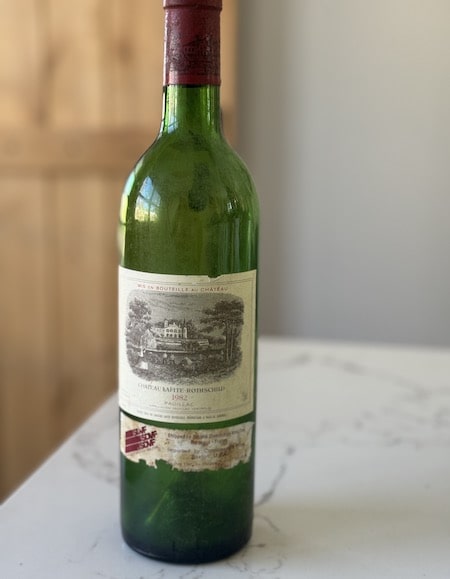
7 Things to know about wines from Bordeaux
- Be prepared to spend a lot for certain bottles. Bordeaux is a region that produces some of the best red wines in the world and along with this reputation comes a considerable price tag. For a middle or higher quality wine from Bordeaux, expect to pay $50 or more at a store for a new vintage. For a big name and for top Growths, you can pay $800 or more! The latest vintages from Mouton Rothschild and Lafite Rothschild retail for $850 to $900 a bottle.
- Wines from Bordeaux are perfect for aging. Wine from this part of France is a favorite with collectors and you’ll usually find a red from Bordeaux in most fine wine cellars. Some wines from prestigious chateaux, depending on the vintage, can age for up to 40 to 60 years!
- Bordeaux wines pair well with red meat. Wines from Bordeaux pair well with food like beef and lamb because of their structure, body, and fruit. Moreover, the fat and proteins in red meat help to mitigate the tannins in the wine – tannins can be bitter and are what makes your mouth pucker when you drink wine. A Bordeaux wine would make a particularly good pairing with a roast or typical French food like steak-frites or a filet with a rich sauce. For Bordeaux food wine pairings, think protein and fat.
- You should serve them in a Bordeaux glass. A Bordeaux glass is a tall red wine glass with a fairly wide opening at the top so it spreads the wine across your mouth. Take note, the bowl of a Bordeaux glass is not as wide as a Burgundy glass and the opening is not as narrow. That’s because wine from Bordeaux is not as high in acid as Pinot Noir. You want the glass to spread the wine across your tongue instead of focusing it in the center.
- Drink some wines from Bordeaux young. Wines from the less prestigious areas, for example Cotes-du-Bordeaux are often referred to as a Petits Chateaux and can be anywhere from $15 to $25. These bottles make a good everyday drinking wine and you should open them in the first three to five years. If you see a wine from Bordeaux that is less expensive, you can be fairly certain it falls in this category or is a commercially produced wine.
- The white wines are blends too. We’ve talked mostly about red wines from Bordeaux but they make some beautiful whites as well, known as Bordeaux Blancs. A white wine from this region is usually a blend of Semillon and Sauvignon Blanc. In addition to these varieties, you can also sometimes find Muscadelle in the blend. The most prestigious Bordeaux Blanc comes from the Graves area.
- They make a famous dessert wine in Bordeaux. The southernmost regions of Bordeaux are Sauternes and Barsac where they make some of the best dessert wines in the world. Sauternes is a white wine produced thanks in part to a fungus known as Noble Rot which dehydrates the grapes so they become richer in flavor and have higher sugar levels. It’s a luxurious and sweet wine with honey, apricot and lemon flavors and a rich texture; people in France pair it with Foie Gras. Good value dessert wines can also be found in the Cadillac and Loupiac Bordeaux appellations.
More on white wine from Bordeaux
White wine from Bordeaux can range from a light, crisp everyday drinking wine to an oak aged, fuller-bodied wine you’d pair with richer food. Most Bordeaux Blanc is a blend but you can find some Petits Chateaux that make wine that is 100% Sauvignon Blanc. Note the Bordeaux and Loire regions of France both grow Sauvignon Blanc. Bordeaux Blancs (Blanc means white in French) tend to be dry and have great minerality. You can find beeswax aromatics and hints of honey and lemon, with oak in the finish. A better white wine from Bordeaux can also age well and be put in your cellar for up to ten years or more!

